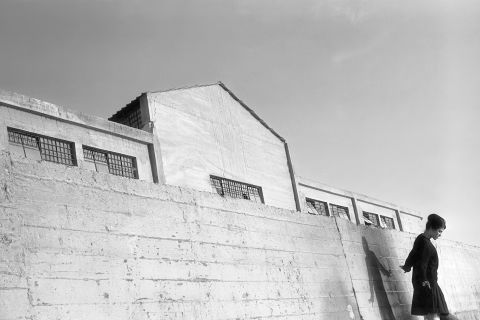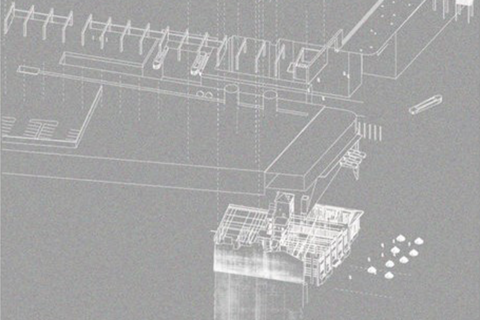Research & Innovation Authority
רשות המחקר והחדשנות
مكتب الأبحاث والابتكار
The Center for the Study of Visual Representations of the Holocaust
contact us by e-mail
Like all historical events, the Holocaust suffers from the erosion of memory. The voices of witnesses slowly fade from the public arena, the content of memorial ceremonies becomes fossilized, and commemoration sites fall into neglect; and thus, forgetting replaces remembrance.
However, there is a form of engagement with the events of the Holocaust which offers an alternative to this path—visual expression, which is now the central means for commemorating and gaining knowledge about the Holocaust. This visual medium began with the publication of pictures and films that revealed the horrors of Nazism while they were still underway; it became the basis for the creation of Holocaust awareness, which was central to commemoration efforts; and now, in the age of the internet and social media, it is the most popular and accessible means for fostering public awareness, disseminating knowledge, and encouraging remembrance of the Holocaust.
This relatively recent and rapid shift in the ways knowledge is acquired and consciousness shaped, driven by technological advances, has had a direct impact on the status of works of visual art, affording them a central role in the dissemination of historical knowledge. Meanwhile, traditional historical research has become increasingly disconnected from the means by which the broader public accesses and shares knowledge about the Holocaust. Clearly, as the main conduit for the distribution knowledge passes from the hands of professional historians to visual artists—and as today’s younger generation gain their information from YouTube clips, movies and TV shows, and visual memes—there is a greater risk that the truths of the unprecedented genocide inflicted on the Jewish people by the Nazis and their accomplices can be falsified, denied, and forgotten.
Consequently, there is now an urgent demand for the development of the field of visual representation research, which until now has not garnered significant academic or public attention. Currently, there is no body of art research examining the issue of works of art being used for the dissemination of historical knowledge, or of artists being responsible for the dissemination of knowledge by means of the artistic interpretation they give to historical information.
In response to this need, the Center for the Study of Visual Representations of the Holocaust has been established at the Bezalel Academy of Art and Design. Its mission is threefold:
1. To provide an academic platform focusing on the exploration of the different forms of visual representation of the Holocaust and how they shape knowledge, awareness, and commemoration of this unprecedented genocide, which has a unique place in public discourse in Israel and throughout the world. This platform will include the Center’s faculty, as well as the publication of a journal and the promotion of conferences and symposia.
2. To instigate and promote new avenues of research, both applied and theoretical, into the ways in which visual media—including drawing and painting, sculpture, cinema and television, photography, comics, and illustration—create a language of signs and symbols that serve as the main infrastructure for the distribution of historical knowledge about the Holocaust. In particular, the Center will serve as an academic home and hothouse for researchers from Israel and abroad, encouraging interaction, study, and research.
3. To provide an engaging and inviting environment which scholars and students alike from the fields of art and design can apply themselves to studying the greatest tragedy to have befallen the Jewish people, and thereby to encourage them to continue to grapple with the commemoration of the Holocaust throughout their professional careers. This will include the creation of innovative curricula and courses.
The Bezalel Academy of Art and Design in Jerusalem is the oldest and most prestigious institute in Israel for the teaching and study of design and art, and provides its students with a rich framework of historical and theoretical studies. It is an academic home for scholars, artists, designers, architects, and theorists who together create the highest quality setting possible for innovative research of this kind. As an institution that has been at the heart of the history of the renewal of the Jewish people in its homeland, Bezalel views the promotion of visual research of the Holocaust as a mission and a calling, based on a clear understanding that its students and teachers now bear an increasing responsibility for creating knowledge and shaping commemoration and public consciousness regarding the Holocaust.
Bezalel does not view this undertaking as merely a local or Israeli issue; rather, it sees itself as a pioneer in a field of global importance, and aims for the Center to become an international body for professional knowledge in the field of visual research of the Holocaust. To that end, it is working to collect, store, and catalog information, research, and visual and theoretical materials related to this area of study.
By initiating and supporting studies into topics related to the visual expression of the Holocaust; by creating new bodies of knowledge and archives; by developing special curricula and courses; by publishing journals; and by organizing international conferences and having its scholars attend exhibitions and symposia around the world—the Center for the Study of Visual Representations of the Holocaust at Bezalel will properly establish this new field of research, and will become the international trailblazer for the shaping of Holocaust remembrance in the 21st century.
This course seeks to describe how does the process of Shoah visualization works. This by examining several chosen visual expressions. Thus, through acquaintance with various of art and culture works, the students will be introduced to the ways in which the history of the Shoah was translated into visual language. And how the artist is function as a historical knowledge distributor.
During the course, students will be exposed to the works that left a significant mark on the reflection of the Shoah in the public discourse in Israel and around the world. Such as Films, television programs, social media projects, memorial monuments and graphic novels, alongside the completion of historical and theoretical background on the Shoah itself, its commemoration and the ways in which it relates to it.
The unpresented nature of the Holocaust seems to be represented by a quantitative way, embodied in the number six million, which expresses in the collective memory the number of those murdered and, by the way, reflects the scope and dimensions of the Holocaust as an act of genocide. This course seeks to broaden the perspective and examine Jewish genocide during World War II in the Nazi occupation countries as an act of murder not only of people but also of Judaism as a civilization. Therefore, this course seeks to present the Holocaust mot only as an action of mass murder, but as a brutal application of worldview (Weltanschauung) who wished to annihilate any form of Jewish existence. An action that it could be named Judocide.



